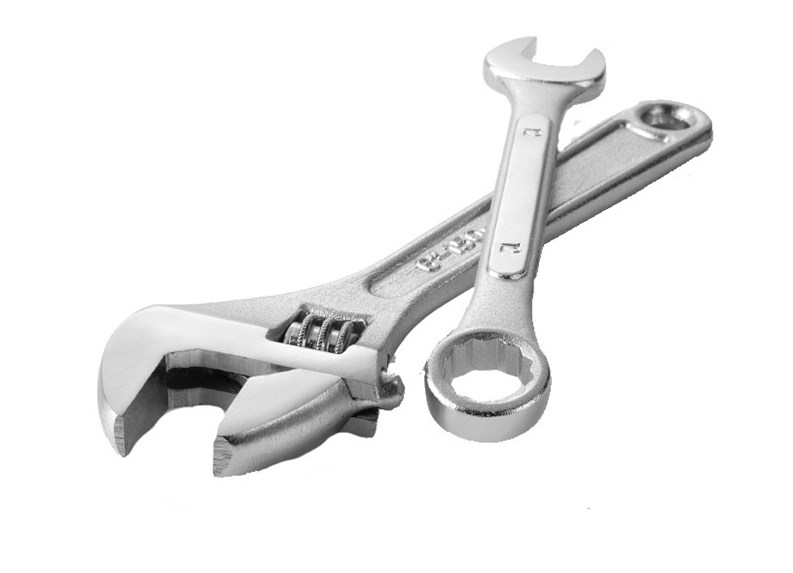Efficiently heating and cooling residential buildings in New York City is a challenge. Decades ago, energy conservation and comfort simply were not the issues that they are today. What may be seen as a hardship today, (i.e., lack of air conditioning), wasn't even considered forty and fifty years ago. Today, relatively small temperature fluctuations are considered a problem needing attention. Less technology, fewer creature comfort concerns and lower energy costs then seemingly contributed to a variety of building and HVAC design practices, which are causing problems for building managers and occupants now. While there have been many advances and improvements in HVAC equipment performance and controls, and good reasons in terms of comfort and energy savings to upgrade to newer technology, dealing with the disruption of implementing equipment retrofits is a major consideration. This consideration often outweighs all other concerns. Programmable thermostats will yield immediate financial returns while reducing heating/cooling costs and increasing residents' comfort.
A variety of HVAC technologies can be found in the city's residential building stock; several are common. Steam radiators, electric baseboard strip heat, packaged terminal air conditioning (PTAC), packaged terminal heat pump (PTHP), two-pipe and four-pipe fan-coils are all common examples.
Many buildings lack cooling design components and rely solely on window and wall A/C for air conditioning. These common equipment choices typically use integrated line-voltage thermostat controls (of the bimetallic or refrigerant-tube variety) mounted within the equipment itself. They are unfortunately synonymous with remarkably poor temperature control. In the case of some fan-coil models, only a fan-speed switch is provided; surprisingly, no thermostat exists of any kind.
Equipment efficiency is an important factor, but regardless of efficiency, good temperature control is vital. Without it, energy waste is inevitable. After all, operating high-efficiency equipment without proper controls is merely wasting energy, albeit efficiently.
Inadequate temperature control and lack of programmable temperature setback capability is characteristic of residential HVAC equipment in New York City. Poor temperature control leads to overheating and overcooling living spaces and common areas, wasted energy and sacrificed comfort.
The truth is, line-voltage thermostats are imprecise as designed, improperly located, difficult to regulate, and generally a nuisance to adjust, often resulting in their being set and left in an unnecessarily high demand state. It is an understandably difficult task to combine the function of an accurate temperature sensor with a power control switch in a single electromechanical device. The line-voltage thermostat is a solution at odds with itself - a device capable of exerting sufficient mechanical force to actuate a line-voltage switch, yet sensitive to small changes in temperature. Such controls can be so flawed that occupants sometimes resort to opening windows in the winter to control temperature, rather than fight with impossibly deficient controls. A properly located precision programmable thermostat would solve comfort problems and it has been proven to save considerable energy as well.
For best performance results, the thermostat should be located approximately five feet above the floor on an inside wall in an area with good air circulation. A thermostat should not be located where air is stagnant, such as behind doors, in corners or under cabinets. Hot or cold drafts from air ducts and windows should be avoided. Avoid heat from the sun, lighting fixtures, appliances, fireplaces, etc.
Much of the existing heating and cooling equipment in use in New York City today is perfectly suitable for the job provided good thermostatic controls exist. The problem though is wiring. Can a precision, wall-mounted thermostat be properly located and wired to existing equipment without unacceptable disruption to the premises, and at a reasonable cost? The short answer is probably not, unless it is a wireless thermostat.
With the help of funding support from the New York State Energy Research and Development Authority (NYSERDA), ENERNET Corporation, (www.enernetcorp.com) a small upstate New York company, was recently awarded a U.S. patent for their wireless thermostat system. Designed specifically to address problems associated with inferior thermostatic controls, the T9000 wireless thermostat is a new tool for heating efficiency. A two-part system, it consists of a battery powered thermostat and one or more control devices called Receiver Control Nodes (RCN). The RCN component is connected to the HVAC equipment. Battery operated, the thermostat is mounted wherever it is most appropriate, and uses 900MHz radio frequency (RF) communications to remotely activate the receiver control nodes. It is the only thermostat system that by design provides programmable control of completely unrelated heating and cooling appliances.
Energy Conservation and Comfort
A stable, well-regulated space temperature is not only desirable for comfort; it also saves energy and money. It has been documented that considerable energy savings can be obtained through retrofit to precision, programmable wall mounted thermostats. Studies by the Electric Power Research Institute (EPRI) and others have shown that as much as 30 percent savings is possible using this type of equipment.
One drawback to preventing thermostat retrofit is the need to install wiring from the point of best thermostat location to the heating/cooling source. Hardwiring is difficult, expensive and disruptive - strong deterrents to upgrading. For this reason, retrofit to precision thermostat control with its resulting comfort and energy conservation benefits is seldom performed. But with the advent of a wireless thermostat, virtually any poorly controlled heating/cooling load can benefit from precision thermostatic control and programmability, thereby dramatically improving comfort, and economy.
A number of factors contribute to energy waste and diminished comfort with bimetallic line-voltage thermostat technology. One such EPRI study showed that low-cost bimetal-strip line-voltage thermostats in electric baseboard heating application perform very poorly. The strips adjust slowly to changes in room temperature, and internal heating of the wires often makes it difficult to maintain a setpoint temperature. Even shortly after installation, these thermostats generally do not maintain stable temperatures, and their performance degrades with time.
When a line-voltage bimetallic thermostat element, which consists of a strip of two dissimilar metals (usually copper and steel) with different coefficients of thermal expansion bonded together, responds to temperature, oftentimes temperature changes causes the strip to bend. The bending motion actuates a switch of sufficient size to handle the current of the load in question. Test observations of a generic line-voltage thermostat found that temperature fluctuations of about 10°F may be experienced, according to EPRI.
And thermostat controls integrated within the heating or cooling appliance itself, (i.e., window A/C, PTAC/PTHP and baseboard electric heat with controls on the baseboard), have been shown to exhibit even worse performance. And inappropriate thermostat location (at floor level in the case of electric baseboard with integrated controls, in an outside wall sleeve or window in the case of PTAC/PTHP and window A/C) for the zone being controlled further magnifies control problems.
Occupants select thermostat set points based on maintenance of a minimum acceptable comfort level. Consider an occupant during the heating months who desires a minimum space temperature of 72°F. A generic line-voltage thermostat with previously described performance deficiencies may need to be set at 80°F and possibly higher to ensure that comfort level. The average space temperature using the bimetal thermostat will be much warmer than needed to make the occupant comfortable. (The opposite logic of course applies to cooling.)
Integrated thermostat controls in this PTAC unit allow average temperature fluctuations of 10 degrees. In fact, minimum/maximum temperature peaks in a controlled 37-hour dataset were found to be off nearly 20°F.
What is key here are the lowest points in each high/low swing cycle because this is the temperature at which the occupant is in fact comfortable. However, while the acceptable temperature is around 70°F, the average temperature is slightly over 78°F. This excess heat is wasted energy, and it is a significant loss of energy. Clearly, if temperature were better regulated, the occupant would be more comfortable while simultaneously saving energy and money.
Programmable thermostats can save significant amounts of heating and cooling energy, resulting in economic and environmental benefits. "Residential energy use represents 20 percent of all U.S. energy consumption, and nearly one-half of all energy used in the home is for heating and cooling. Consumers spend six to 12 percent of their gross income paying for residential fuel and utility costs - an amount equal to $100 billion annually. Programmable thermostats, when used properly, can save consumers 20 percent to 30 percent on heating and cooling bills," according to an EPA Energy Star assessment.
"Adjusting the temperature at night as well as during the daytime (up during the cooling season) can result in an 11 percent to 15 percent savings. During the winter, a single temperature setback during the day can result in an approximate 16 percent to 18 percent savings. A double setback (at night as well as during the day) can result in up to 30 percent savings," according to Greenbuilder's Sustainable Building Sourcebook.
Deciding to upgrade heating and cooling equipment to improve efficiency and comfort is a big step. Nonetheless, in many if not most cases, the first order of business should be getting properly located, precision programmable thermostatic control over what is there. Precision temperature control not only dramatically improves comfort, it's a good investment as well.







Leave a Comment